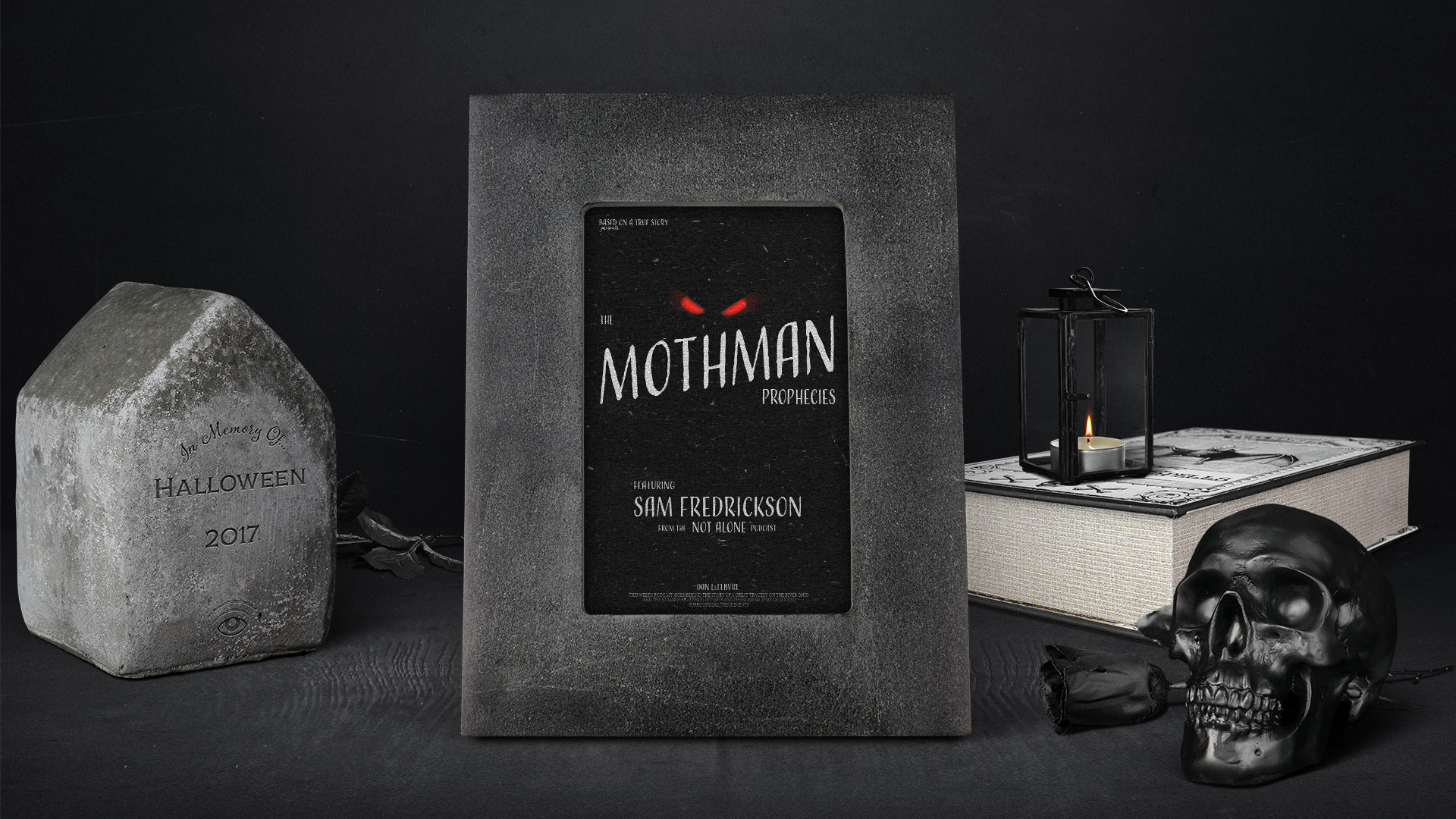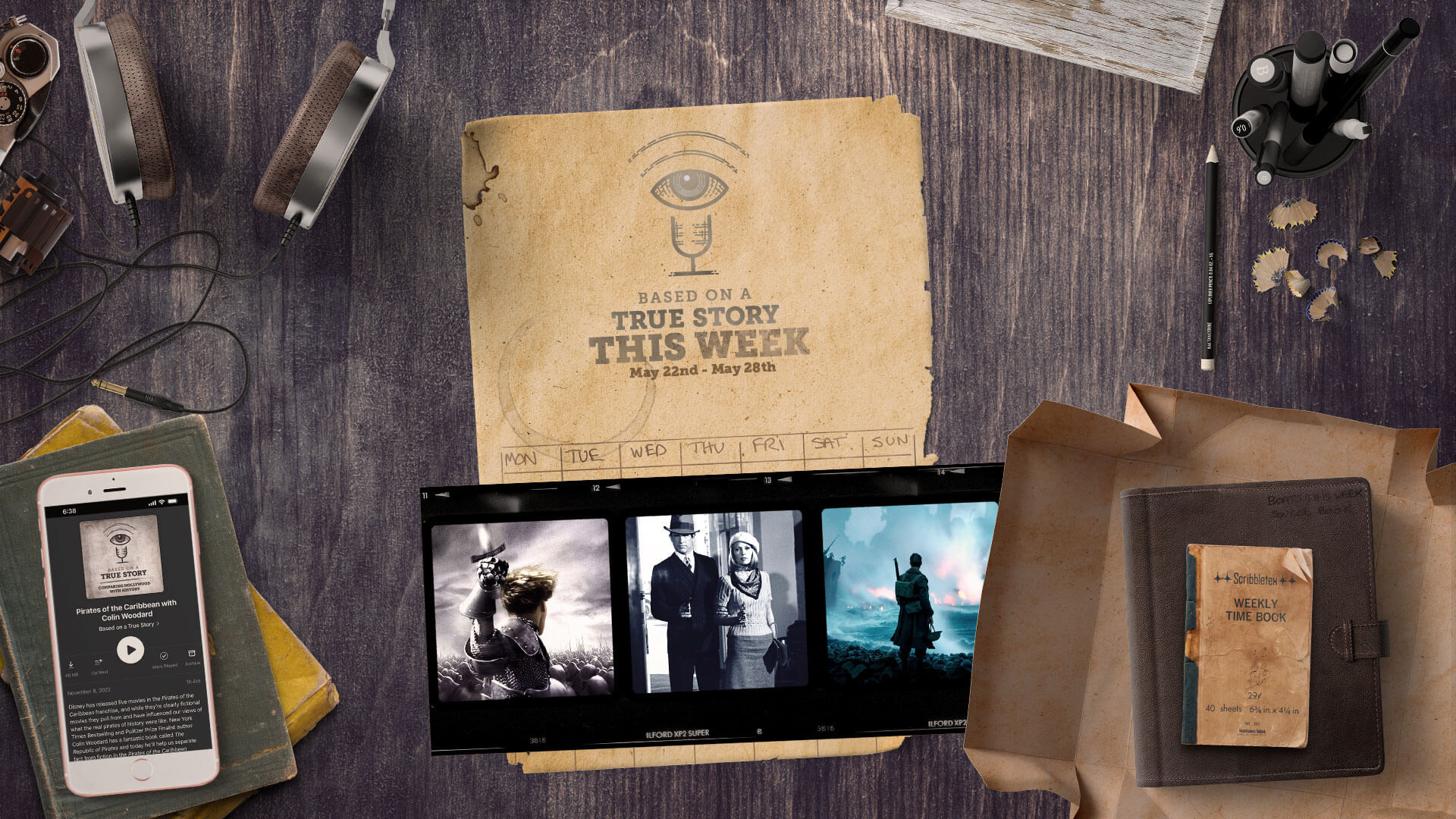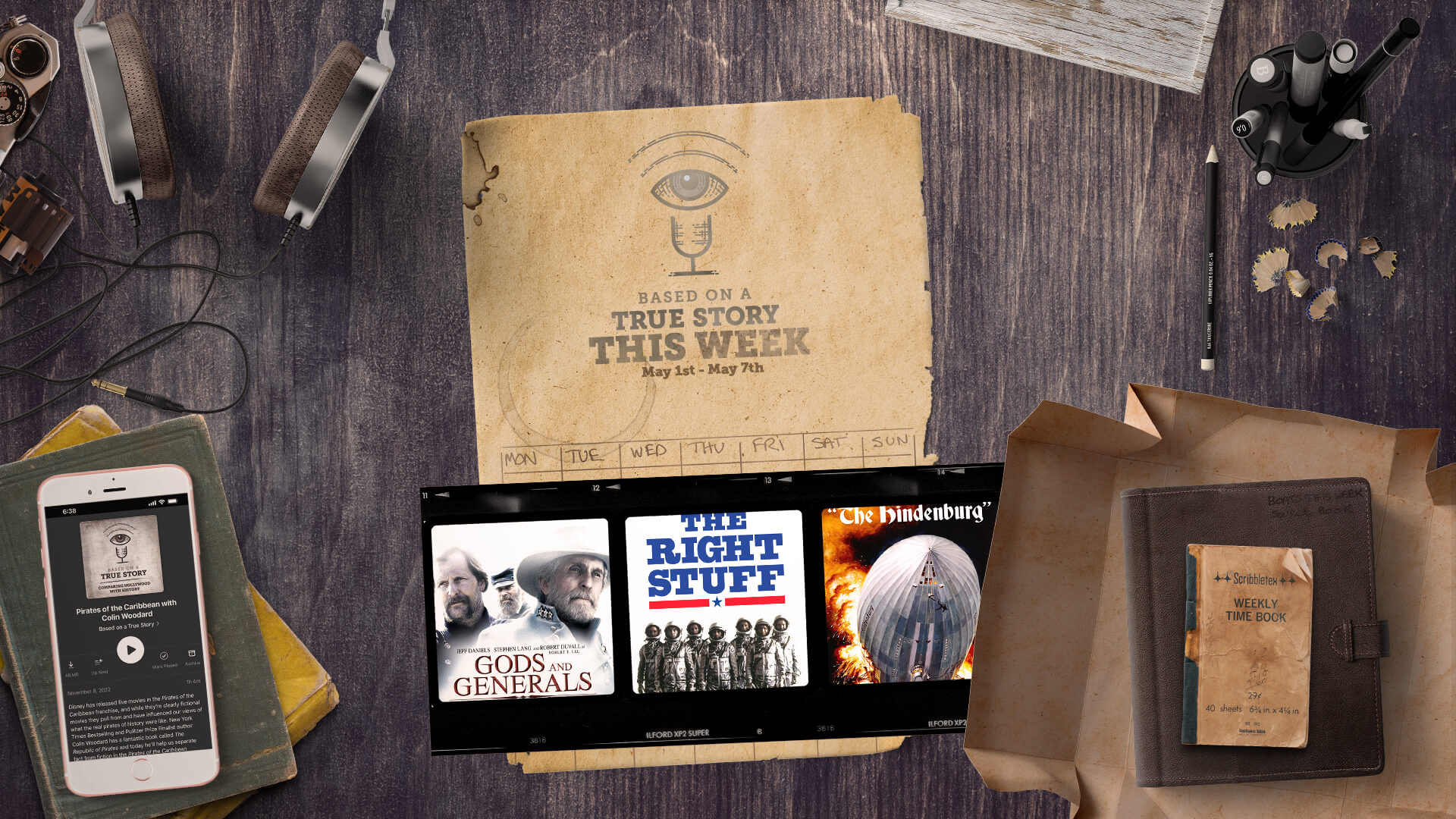In this episode, we’ll learn about historical events that happened this week in history as they were depicted in Geromino: An American Legend, The Great Northfield Minnesota Raid, and All Eyez On Me.
Did you enjoy this episode? Help support the next one!
Disclaimer: Dan LeFebvre and/or Based on a True Story may earn commissions from qualifying purchases through our links on this page.
Transcript
Note: This transcript is automatically generated. There will be mistakes, so please don’t use them for quotes. It is provided for reference use to find things better in the audio.
September 4, 1886. Skeleton Canyon, Arizona.
This scene in the movie starts with a beautiful landscape of a desert canyon. Not a single person can be seen, but it doesn’t take long for Matt Damon’s voiceover to tell us the date of September 4th, 1886, as well as the significance of the date.
Damon’s character in the movie, 2nd Lt. Britton Davis, says that’s the date that Geronimo and 34 Chiricahua men, women, and children surrendered to General Nelson Miles.
The scene in the movie changes to Kevin Tighe’s character, Brigadier General Nelson A. Miles, riding a horse in front of those men, women, and children walking by foot along the canyon.
We can see some other U.S. soldiers in uniform riding horses in the background, too, but the camera’s focus is on Miles.
The voiceover continues, saying that as Geronimo handed over his weapons, he simply said, “Once I moved about like the wind. Now I surrender, and that is all.”
One of the soldiers there is 2nd Lt. Davis—a very young Matt Damon.
The camera cuts to another scene of this whole column of men, women, and children walking by foot alongside the soldiers on horseback.
That scene comes from the 1993 movie called Geronimo: An American Legend, and the movie is correct to give us the date of September 4th, 1886, as the time that Geronimo surrendered for the final time—he had actually surrendered multiple times before, but life on a reservation wasn’t kind to those who were used to a nomadic lifestyle like the Apache people were.
That quote is something often attributed to Geronimo, too:
“Once I moved about like the wind. Now I surrender to you and that is all.”
What’s tricky about verifying the quote, or really many things about the nature of Geronimo’s actual surrender is that his story of what happened and the story of what happened from the U.S. soldiers who accepted his surrender are different.
According to the U.S. Army’s account, Geronimo’s surrender was unconditional. Not so, according to Geronimo’s own memoirs. He insisted to his dying day that he and his people had been misled and the surrender was conditional.
Maybe that’s why the movie doesn’t show the actual surrender itself but describe it through voiceover.
But, the movie was also correct to mention Geronimo’s weapons in that voiceover. He had three weapons on him at the time of surrender: A Winchester rifle, a Colt pistol, and a Bowie knife.
Today, the rifle is on display at the U.S. Military Academy in West Point, New York, while the pistol and knife are at a museum in Fort Sill, Oklahoma—where Geronimo died in 1909, decades after his surrender.
If you want to watch the scene from the movie we talked about this week, check out the 1993 movie called Geronimo: An American Legend.
The scene we talked about this week starts at about an hour, 40 minutes, and 29 seconds into the movie.
September 7, 1876. Northfield, Minnesota.
The water trough in the foreground of the shot is filled almost to the top. There’s a carriage just on the other side of it, and in the background, we can see buildings along the road. Picture if you will, a typical Western town—and this is basically what that looks like.
Except in most Western movies, the dirt road is all dusty. This one is muddy because it’s raining out. Someone carrying an umbrella races along the road as they try to keep from getting wet.
A couple women rush along the sidewalk, too, seemingly trying to stay dry. Not everyone cares about the rain, though, as we can see a man on a horse meandering slowly along the road. The camera focuses in on him as he continues along the road and now we can start to see some of the signs for buildings along the way.
The signs for the stores are very self-explanatory: That one just says “Furniture” and next to it is “Manning’s Stoves & Hardware.”
There’s not much of a surprise about what you’ll be able to get there.
The camera shifts focus now and instead of following the lone rider on the horse, it cuts to three men on horses coming the other direction. Oh, there’s more than three—there’s another guy who seems to be a part of the same crew.
It looks like it’s raining harder now, too, as the camera angle changes. The four men get off their horses and as they’re moving, we can see at least one of them has a rifle. They walk up to the sidewalk, looking around as if they’re seeing who is noticing them arrive. No one else seems to notice…or, at least, if they do it’s not apparent from the movie.
Inside one of the buildings, there’s a man writing something down. There’s a noise behind him, and he turns around just in time to get hit over the head with a shovel. He slumps over, unconscious. The window blinds are closed so no one from the outside can see what’s about to happen inside.
The other guys in the crew who were still outside in the rain calmly walk inside, and we can see there’s a sign on the outside that says this is a bank. More violence ensues as the men force the workers inside to, as one of the men says, “make a withdrawal.”
Except…I don’t think this is a legitimate withdrawal since it’s happening at gunpoint.
And that is how the 1972 movie called The Great Northfield, Minnesota Raid depicts the start of an event from this week in history when the James-Younger Gang participated in what many have called one of their most infamous holdups.
As you can imagine, since the whole movie is about that event, there’s more to the sequence in the movie.
It’s the big climax at the end.
As the name of the movie says straight up, this raid really did happen in the town of Northfield, Minnesota. Well, the movie calls it a raid. It was a bank robbery. For a bit of geographical context, Northfield, Minnesota is about 36 miles, or 58 kilometers, to the south of Minneapolis.
And the First National Bank of Northfield had about $15,000 in its safe at the time. In 1876, that’s about the same as $423,000 today.
And while the segment of the movie we just heard described doesn’t give any indication about who is who, in the true story, one of the reasons why the robbery at the Northfield bank has gone down in history is because it was the beginning of the end for the notorious outlaw Jesse James.
The James-Younger Gang got their name from two sets of brothers: Frank and Jesse James as well as Cole and Bob Younger. They weren’t the only ones in the gang, of course, but they were the leaders and generally considered the most notorious of the outlaws.
Around 2 o’clock in the afternoon on September 7th, 1876, the James-Younger gang rode into Northfield, Minnesota with a plan to rob the bank. I couldn’t find anything to suggest it was raining like we see in the movie, but the weather didn’t really matter for the plans.
Three members of the gang took up position down the street near a bridge as lookouts. Two more stayed outside the bank. Frank James, Bob Younger, and another of the gang, Charlie Pitts, were the members of the gang to enter the bank. While it didn’t necessarily happen exactly like we see in the movie with the shovel knocking one of the men unconscious, the robbers did demand the bank employees open the safe.
One thing the movie got wrong was how the town was alerted to the bank being robbed. We didn’t talk about this in the scene of the film we covered, but a little bit later there’s someone outside the bank who gets shot by someone in the gang. That is what makes everyone get alerted to what’s going on.
In the true story, it should have been included in the segment we talked about earlier because there was someone leaving the bank right as some of the gang went in to rob it. That person, a man named J.S. Allen, recognized the bank was being robbed almost immediately. He didn’t know who the robbers were, but he knew what was happening and he called out for help. Some townspeople nearby heard the call for help and grabbed their guns to investigate the bank.
The robbers outside the bank guarding the door didn’t help with the curiosity of the armed townspeople investigating.
A shootout started.
In the chaos, two of the James-Younger Gang were killed and left behind as they fled with only about $26.70 instead of the $15,000 in the safe.
A militia was formed to find the gang that had just tried to rob the bank. When they caught up to them, Charlie Pitts was killed by the militia in a shootout that saw the Younger Brothers captured. The only ones to get away from the attempted robbery at the Northfield bank was Jesse and Frank James, who had split off from the rest of the gang to flee back home to Missouri.
If you want to watch the event that happened this week in history as it’s depicted on screen, check out the 1972 film called The Great Northfield Minnesota Raid.
The gang rides into town to start the bank robbery sequence at about an hour and two minutes into the film.
And while we don’t have an episode covering that movie, if you want to learn more about the true story I’ll include a link in the show notes for this episode to a fantastic article from the Minnesota Digital Library that includes photographs of the places and people involved.
September 7, 1996. Las Vegas, Nevada.
A group of friends are standing outside the Luxor hotel and casino. There’s a black BMW there under the lights, and after a round of handshakes goodbye, two of the guys get into the car. We find out from the dialog the guy behind the wheel is Suge.
The camera cuts to the car driving down the street in Vegas. Bright lights from casinos around them shine in the night.
The two guys in the car are listening to rap, turning it up loud. The guy in the passenger seat remarks how good these guys are—meaning the rappers they’re listening to in the car.
At a stop light, an SUV pulls up next to them. The driver looks over and calls out to the guy in the passenger seat of the BMW. “Yo Pac, what up?”
Then he raises something up and points it at Demetrius Shipp Jr’s version of Tupac. A flash. The driver of the SUV took a photo of the two in the car. Then he compliments Tupac, “You’re looking good!”
Tupac replies that he’s feeling good. Be safe, man. The SUV driver pulls away, and Suge and Tupac continue driving in their BMW. Tupac changes the cassette tape to something else, and we can see they’re driving by Flamingo Road.
Tupac sings along with the R&B song, much to the chagrin of Suge.
They stop at a red light on Koval Lane. Another car pulls up next to the BMW. This time it’s a white sedan. Two women inside notice Tupac in the car next to them and call out for him. Suge and Tupac tell the girls which club they’re going to and suggest the girls follow them.
Behind Tupac, we can see another car pulling up to the red light on the other side of the BMW. Tupac turns around and looks at the other car.
The screen goes black.
After a moment, the movie returns and we can see a gun shooting out of the other car into Tupac’s side of the BMW. Multiple shots. Then, the car with the shooter accelerates and drives off.
That sequence is how the 2017 movie All Eyez on Me depicts an event that happened this week in history when the rapper Tupac Shakur was shot multiple times in a drive-by shooting in Las Vegas, Nevada on September 7th, 1996.
The true story of what happened that day is still shrouded in some mystery. We don’t really know who pulled the trigger. So, it makes sense why the movie doesn’t show who is behind the murder because we just don’t know.
What we do know, though, is that Tupac was leaving a boxing match in Las Vegas on September 7th, 1996. That boxing match was between Mike Tyson and Bruce Seldon at the MGM Grand—Tupac and his entourage were staying at the Luxor hotel like we see in the movie, but they had gone to the fight at the MGM Grand.
And while the movie doesn’t really show this, there was an altercation as Tupac left the Grand. Some people think that’s what cost him his life, although it’s never been proven.
The movie was correct to show Tupac being in the BMW with Suge Knight, though. Although the scene in the movie we talked about this week doesn’t tell us who Suge was, he was the Death Row Records CEO—basically, Tupac’s boss on his record label. Death Row was associated with a gang in LA known as the Bloods and they had a rivalry with the Crips. Remember that altercation that happened at the MGM Grand? That was with a member of the Crips, and later there would be security footage that showed some people with Tupac kicking the Crips member on the floor of the casino.
The movie was also correct to show the photograph being taken of Tupac while he was in the car with Suge. That photo was taken by a man named Leonard Jefferson, who snapped a photo of Tupac at an intersection…little did he know that would be the last photo of Tupac alive.
According to Jefferson, it was a chance meeting when he just happened to notice Tupac and Suge in the car. He said exactly what we see him saying in the movie, “Yo, what up Pac!”
There was a brief conversation and Jefferson took a now-famous photo of Tupac. I’ll add a link to it in the show notes for this episode, as well as a great article by Brendan Klinkenberg over at the website Complex that outlines Leonard Jefferson’s version of events that night.
A few minutes after Jefferson took the photo, the sound of gunshots rang out.
Witnesses said were two or three men inside the white Cadillac that pulled up next to Tupac and Suge’s car and started shooting.
According to the police report, there were either 13 or 14 shots fired. All of them into the passenger side of the car where Tupac was sitting, just like we see in the movie. The police would later say they’re confident Tupac was the target of the attack.
Although it’s also worth noting that witnesses weren’t too forthcoming with the police, so that’s a big reason why we don’t officially know the truth of what happened. This isn’t shown in the movie at all, but many years later, one of the first police officers on the scene said that when he asked Tupac who shot him—Tupac only said “Fuck you” before going unconscious. He died six days later on September 13, 1996.
If you want to watch the event that happened this week in history, though, check out the 2017 biopic about Tupac’s life called All Eyez On Me. We started our segment today at about two hours, eight minutes and 30 seconds into the movie.
Share this:
- Click to share on Twitter (Opens in new window)
- Click to share on Facebook (Opens in new window)
- Click to share on Reddit (Opens in new window)
- Click to share on Pocket (Opens in new window)
- Click to share on LinkedIn (Opens in new window)
- Click to share on WhatsApp (Opens in new window)
- Click to share on Telegram (Opens in new window)
- Click to email a link to a friend (Opens in new window)
- Click to print (Opens in new window)



